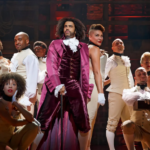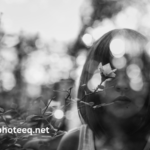Storytelling in film and television is an art form that has been around for centuries. It’s a way to evoke emotions and create a connection between the viewer and the characters on screen. By crafting compelling stories, filmmakers and television writers can draw viewers in and keep them engaged. In this blog post, we’ll explore the elements of storytelling that make for an engaging narrative, from character development to visual design.
The Role of Storytelling in Film and Television
Storytelling in film and television is a way to bring a unique perspective to a story. It’s a way to bring together characters and create a journey that takes the viewer along with them. Great storytelling can also help to create an emotional connection between the viewer and the characters on screen. By crafting a story that takes viewers on an emotional journey, filmmakers and television writers can ensure that viewers stay engaged and come away with a lasting impression of the story.
Elements of a Compelling Narrative
There are many elements that go into creating a compelling narrative for film and television. Character development, setting, location, dialogue and subtext, plot and conflict, and narrative structures are all important aspects of storytelling. Each element works together to create a story that viewers can invest in and relate to.
Character Development
Character development is one of the most important elements of storytelling in film and television. It’s important to create characters that viewers can relate to and that have depth and complexity. It’s important to create characters that have motivations and flaws, and who have an arc that viewers can follow throughout the story.
Setting & Location
The setting and location of a story can be just as important as the characters. The right setting can help to create the right atmosphere and tone for the story. It can also help to create a feeling of place and give viewers a sense of the world that the characters inhabit.
Dialogue and Subtext
Dialogue is an important element of storytelling in film and television. It’s a way to reveal character motivations and create tension and conflict. It can also be used to create subtext, which is a deeper layer of meaning that can be interpreted by viewers.
Plot & Conflict
A plot is the overall story arc of a film or television series. It’s the structure that the story follows, and it’s important to create a plot that is engaging and that builds to a satisfying conclusion. Conflict is also an important element of storytelling. The conflict between characters or between characters and their environment can create drama and suspense and keep viewers engaged.
Narrative Structures
There are different narrative structures that can be used in storytelling in film and television. Some of the most common structures include the three-act structure, the hero’s journey, and the monomyth. Each of these structures has its own unique set of rules and conventions that can be used to create an engaging story.
Audience Engagement
Audience engagement is an important aspect of storytelling in film and television. It’s important to create a story that viewers can invest in and that they can relate to. It’s also important to create characters that viewers can root for and to create a satisfying resolution that leaves viewers feeling satisfied.
Visual Design
Visual design is an important element of storytelling in film and television. It helps to bring the story to life and create a unique look and feel for the story. From the sets to the costumes to the cinematography, visual design can help to create a world that viewers can invest in.
Conclusion
Storytelling in film and television is an art form that has been around for centuries. It’s a way to evoke emotions and create a connection between the viewer and the characters on screen. By crafting compelling stories, filmmakers and television writers can draw viewers in and keep them engaged. It’s important to create characters that viewers can relate to and that have depth and complexity. It’s also important to create the right setting and location, utilize dialogue and subtext, create a plot with conflict, and utilize a narrative structure that works for the story. Audience engagement is also an important element of storytelling, as is visual design. By utilizing all of these elements, filmmakers and television writers can create a story that viewers will invest in and come away with a lasting impression of the story.







